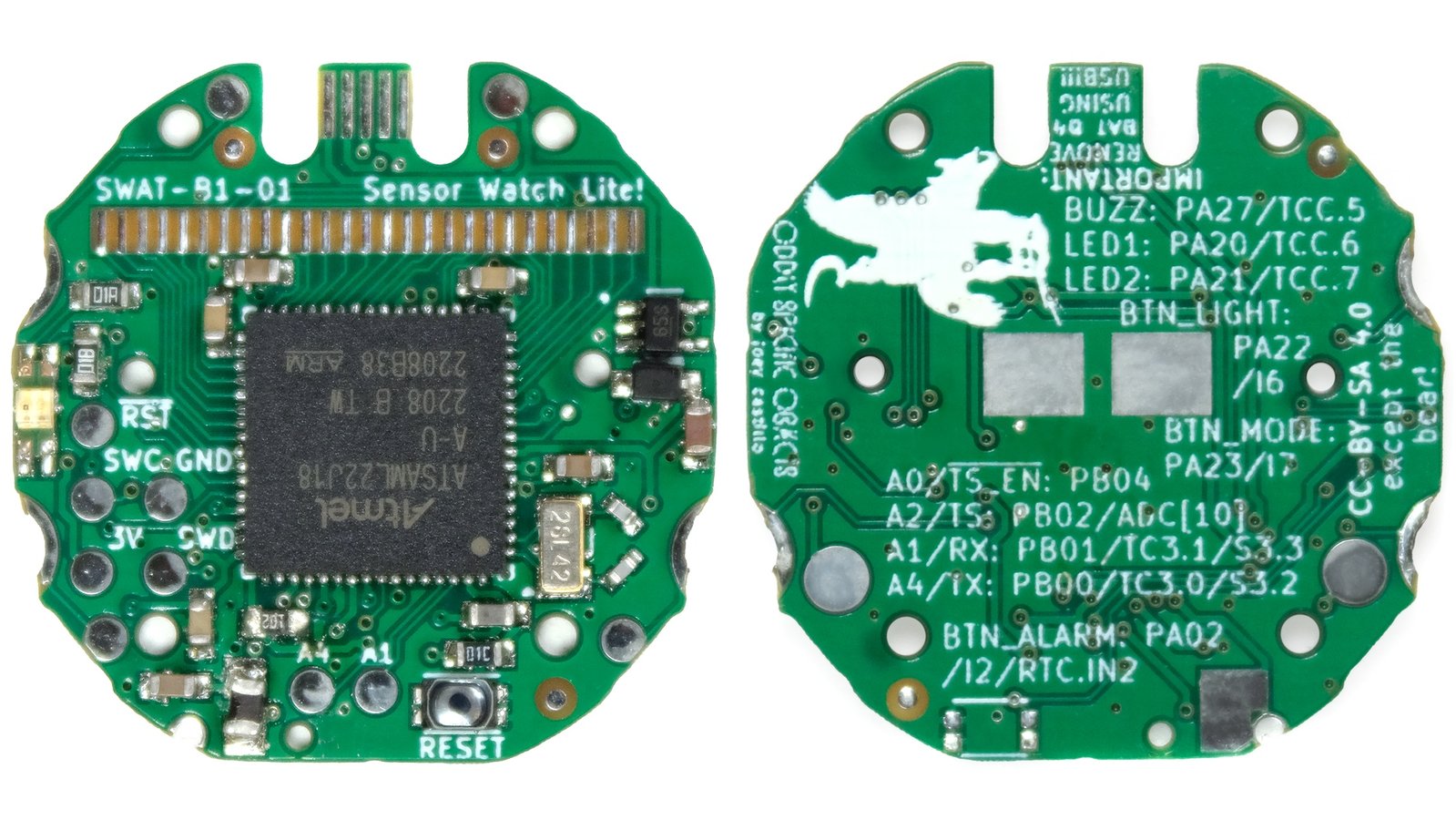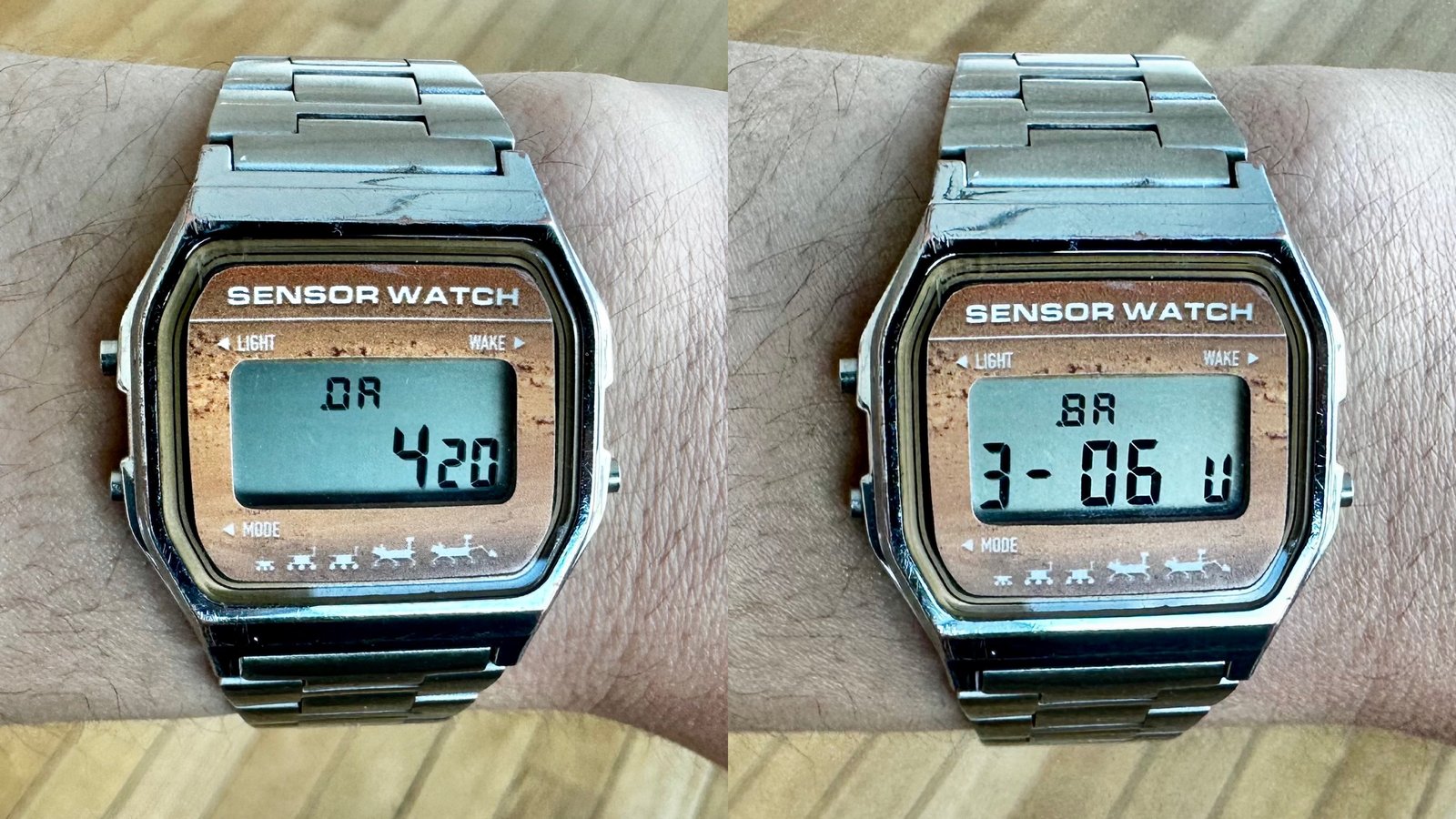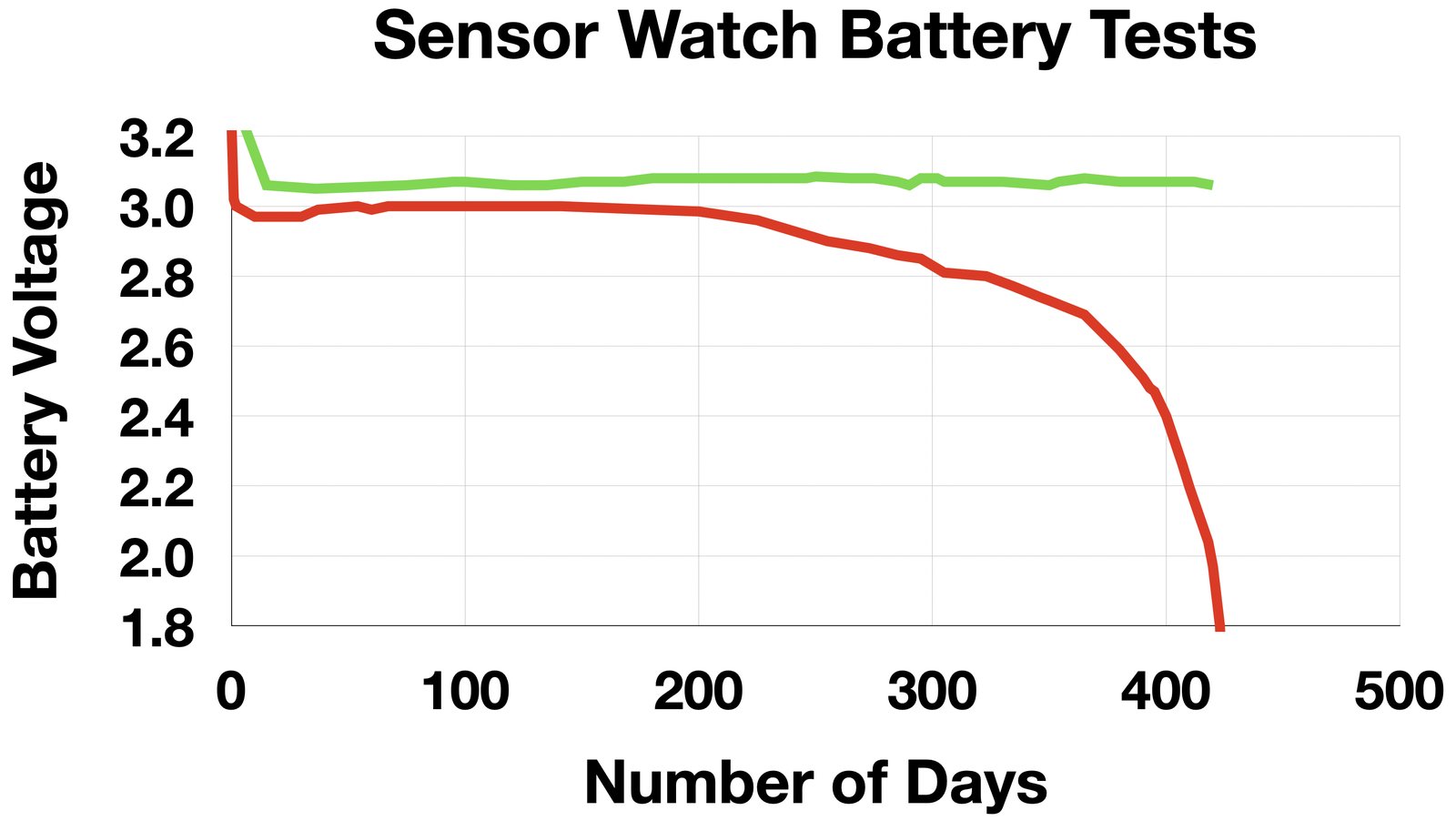Project update 13 of 15
Opening a New Chapter & Closing the Books on the Original Sensor Watch
by Joey CastilloThe big news: as of today, we are taking orders for a new version of Sensor Watch. It’s called Sensor Watch Lite, and it’s a simplified, streamlined design that removes the 9-pin connector and moves the temperature sensor onto the board itself. It’s available for pre-order now and will ship this summer.
The reason for this board is simple: I was only able to hit a $40 price point last time — $36 for the board and $4 for the temperature sensor — by doing a lot of manual labor myself. I built the sensor boards myself, placing parts with tweezers, and I painstakingly tested each board in a three-step process that really only I could do. Going forward, I need to be able to outsource that labor to someone else, and that means I would need to either raise the price, or simplify the design and the test procedure.
We’re doing the second option for now, and Sensor Watch Lite is how we’ll do it. The simpler design allows us to hit an even lower price point — $39! — while keeping the same core features of Sensor Watch alive.
If you’re interested, there’s a free-to-read post about the economics of Sensor Watch available here; it reveals exactly what Sensor Watch earned last time, and exactly how Lite changes the math (for the record, it’s tighter). The TL;DR of it all is that I’m working really hard and sacrificing a ton of revenue this round to hit a $39 price point, because I want Sensor Watch Lite to remain affordable and accessible.
New Battery Test: Day 420
In case you missed it on Mastodon: the old battery test, started in November of 2021, finally ended this year: on January 7th, after 425 days, the coin cell in that first Sensor Watch died. If you recall, that watch was running an older, less efficient firmware — and still it beat expectations to last for a year and two months, and saw bits of 2021, 2022 and 2023.
The new battery test started last February, with a new and more power-efficient firmware (the same firmware that shipped with all Sensor Watch boards from the campaign). That test hit 420 days yesterday, and I’m stoked to be able to share that, with the new firmware, it was still at nominal voltage — 3.06 volts — 420 days in! (also: what’s that sticker on the faceplate? It’s a Sensor Watch Screen Thing! More at the link.)
In this graph, the red line represents the old test, and the green line the new test. You can see how around day 200, the battery voltage in the old test began to sag. From there, it took another 200 days for it to sag to 2.4 volts, and within 25 days of that, it was dead.
In the new test, the battery voltage has stayed near 3.07 volts all year long, even as we close in on day 425 (which is the day the first test ended). This signals to me that we aren’t yet at the halfway point, and that the Sensor Watch firmware (as shipped to all of y’all) is likely to last comfortably longer than a year in its default configuration.
Anecdotally — I don’t have the data to graph this — I gave a second test watch to a friend on the same day that I started my test. He however kept the hourly chime on, and his battery voltage was in the 2.9 volt range at day 365, and 2.85 at day 400. This suggests that while you’re likely to get well over a year of battery life even with the hourly buzzer, it does have an impact. I can reasonably hope for my test watch to last through 2024, whereas I think his battery will likely die sometime this summer or fall.
News of the Watch
The Sensor Watch repository is up to 37 contributors!
The biggest news (in my humble opinion) is the addition of the “Nanosec” and “Fine Tune” watch faces by Zeptobars. While they’re not yet part of any prebuilt firmware, these are a pair of extra settings screens that you can build in yourself to get truly mind boggling accuracy out of Sensor Watch. There are details here on how it works, but the gist is you use the finetune face to synchronize the time precisely with a known good clock (like the one at time.is). Then a few weeks later, you adjust it again. The finetune face then applies a frequency correction value that keeps the time accurate.
Zeptobars, the author of the watch face, reports that after calibration his drift was 100 milliseconds in 42 days. Which means that thanks to his contributions, Sensor Watch could well maintain under 1 second per year of drift. Mind: blown.
Other than that, we merged in some great quality of life improvements since the last update: the TOTP face is more responsive when swapping between codes; the Day One face now allows counting down to dates in the future; and there are some improvements to resetting the time on the countdown timer. A new “Habit” face by tslil clingman allows you to track a habit (like exercise or study) with a weekly look back and total count, and a new “Disc Golf” face by RighteousLightning aids in keeping track of scores in disc golf.
And of course, all of these watch faces will work seamlessly with the new Sensor Watch Lite board that we’re announcing today.
It’s truly inspiring to see all the creativity that folks have brought to the Sensor Watch platform, and I want to say thanks again for being with me on this journey. I think Sensor Watch Lite is going to be a very cool next step in getting more boards made and spreading the joy of this hackable wearable platform, and I’m looking forward to sharing it with y’all very soon.
-Joey


